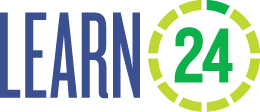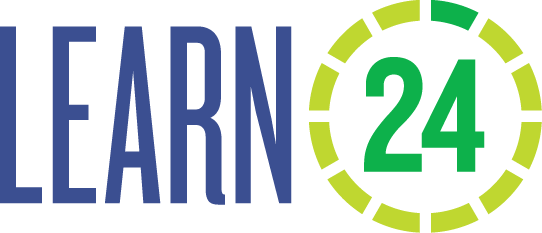Simple Changes, Powerful Impact for Neurodiverse Children and Youth Through OST
Meeta Sharma-Holt, MSW
7/12/24
Yes, it's summer. Yes, you need a break, but ready or not, here they come. The launch of afterschool programs is around the corner. Who is walking through your door this fall? Chances are one out of every five children will have a diagnosed disability (Afterschool Alliance 2023). And that’s just kids who have diagnoses. Experts estimate that the number could be as high as one in three. Can you and your team create an inclusive learning space? Absolutely.
In this, the first of a series of blog posts, program directors and managers who design and oversee informal education programs like afterschool and summer camps will learn low/no-cost and simple ways to create inclusive spaces for neurodivergent children and youth. The information provided is based on my more than 30 years of experience in this industry, using my background as an MSW and personal experience as the mom of two amazing children who have neurodivergence diagnoses.
Ok, so where to start? First, let’s set the foundation. Among students receiving special education and related services, the most common category of disability is "specific learning disabilities (32%),” or neurodivergent. The statistics show that more male students (65%) than female students (34%) receive special education and related services under the Individuals With Disabilities Act (Schaffer 2023). This may be because females are often underdiagnosed. Further, diagnoses of disabilities are the greatest for American Indian/Alaska Natives (17%), followed by those who are Black (16%), White (14%), two or more races (13%), Hispanic (12%), and Pacific Islanders and Asians (7%), according to the National Center for Educational Statistics (2023).
The most common diagnoses include the following:
-
Attention Deficit Disorder (ADD) - Broadly speaking, kids (and adults) with ADD have trouble focusing on tasks and may have difficulty sitting still, organizing assignments, or containing impulses. Researchers from Johns Hopkins Medicine find the "combined type" to be the most prevalent, where children are impulsive, have high energy, can be distractable, and have difficulty staying on task (Ptacek, Weissenberger 2019).
-
Learning Disabilities (or the preferred term "Learning Differences") - Language-based learning differences are defined in several broad categories but can overlap and manifest differently in each person. These conditions affect a child's ability to read, write, listen, speak, reason, or do math. One example is Dyslexia, which involves difficulty reading due to problems identifying speech sounds and learning how they relate to letters and words (decoding). It shows up as school-aged youth struggling to focus on reading because the words blend together or letters seem interchangeable. The graphic at the right shows what letters may look like to someone with Dyslexia.
-
Autism Spectrum Disorder (ASD) – Cognitive differences causing ASD can make social communication interaction challenging or restricted. ASD can also cause children and youth to exhibit repetitive or hyperfocused behaviors.
-
Executive Function Disorder (EF) – Everyday activities that require managing time, planning, and remembering multiple tasks to achieve a finished product are collectively called "executive functioning." In an OST setting, challenges with following a multi-step art project, tracking belongings, or persistently losing track of time, what some call "time blindness,” can frustrate a child or cause social isolation.
Of course, there are many more diagnoses, and most often, the signs and symptoms of neurodiversity overlap and do not manifest in everyone in the same way. It's almost like a fingerprint. For example, ADD is not classified as a learning disability, but between 30% and 50% of children diagnosed with ADD also have learning disabilities, according to the Learning Disabilities Association of America (Clouser, 2022). Similarly, EF is a prominent symptom of ADD but also shows up in people with learning differences.
Simple Changes, Powerful Impact
Neurodiversity does not mean a child is deficient or will necessarily fail. Knowing how children and youth function helps ensure their unique abilities can be fully supported in an afterschool or summer camp program. By providing appropriate support, accommodations, and personalized learning strategies, OST professionals can empower neurodivergent students to thrive academically, socially, and emotionally.
The good news is that OST learning environments serve more neurodiverse youth and are uniquely positioned to provide support, especially when serving children and youth from marginalized communities. Moreover, small, low/no-cost shifts can have a powerful and positive impact on supporting youth with learning differences. The following are ideas for adjustments that can be made from the recruitment stage to program design and staffing. More detailed tips about each area will be provided in upcoming blog posts. So stay tuned!
- Adjustments to the Program Space and Design
The physical space, materials, and instructional approaches can significantly impact neurodivergent children's learning engagement and overall well-being. Examples of shifts can include:
-
Adjusting group sizes or composition. No one says grade levels have to stay together in afterschool programs.
-
Flexibility about where and how participants complete tasks, such as on the floor, in the hallway, or with background music, should be allowed.
-
Helping a child stay on track with reinforcement like stickers or positive check marks to keep on track with assignments.
-
It can be useful to offer objects to count instead of a number on a page, use speech-to-text software, or listen to audiobooks to help children complete their homework.
-
Adding more time to the transition schedule or reducing the number of times children move from one place to another can be very calming.
- Adjusting Staffing and Staff Training
The most essential element of creating an equitable learning environment is staff. Afterschool and summer camp staff must be fully equipped to support neurodiverse learners from the point of their enrollment. Practices to reinforce in training include the following:
-
Specific training on neurodiversity establishes a common understanding, dispels myths, and prevents bias.
-
Ensure confidentiality. The core topics for training direct-line staff and their supervisors include clarifying the organization's confidentiality policy and how to maintain it.
-
Ensure staff knows how to establish a culture of inclusivity and promote a sense of belonging by celebrating individual strengths and differences.
Out-of-school time program leaders can augment in-house training by inviting parents to talk about their experiences. Staff can also schedule conversations with school-day teachers, observe how special education teachers manage children in the lunchroom or invite speakers from groups specializing in learning differences, such as the national network, Children and Adults with Attention-Deficit/Hyperactivity Disorder (CHADD), or via web conference with specialists across the country. Organizations may also petition their local OST intermediary (found through the Statewide Afterschool Network) to connect with other providers or provide workshops at conferences to equip middle managers.
-
Family and Partner Engagement
Families and school-day partners are essential for ensuring seamless support of children and youth after school. A sound approach begins with being open about what accommodations can and cannot be made in the afterschool program. Next is building trust with caregivers, who know their child best. Additional steps include:
-
Ask the questions up front. It can be helpful to add questions to enrollment forms about enrollees' unique needs and whether the child has an IEP or 504 plan.
-
Ensure the information received is kept confidential and that staff who can view it are fully trained in managing what is disclosed.
-
If families provide information about their child's needs, following up promptly to find out more is essential.
-
Partner with school-day teachers to understand what strategies they use for a given child so that, if possible, these can be replicated in the afterschool program.
The most important tip is that none of these adjustments are “one and done.” Changes to program design, curriculum, staff training, and relationship building with partners are ongoing. A key to ensuring the changes work well is to build a regular review schedule and make incremental changes along the way. Gradually making changes may better ensure that the changes are institutionalized.
Conclusion
Imagine how many children are left behind on our daily watch without the proper environment to encourage learning and academic skills. Creating an inclusive and equitable learning environment for school-aged youth with learning differences or ADD is necessary and achievable, and it turns out to be good for ALL the children in our care. OST programs can create spaces that empower and uplift all participants by making simple changes to the learning environment and fostering a supportive culture. Let us embrace the power of inclusion, recognizing that every child has unique potential and deserves a chance to thrive. Together, we can positively impact and create transformative experiences for youth with learning differences in afterschool programs and summer camps. I challenge you today to think of just one small change you can make in your programs.

